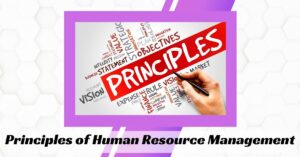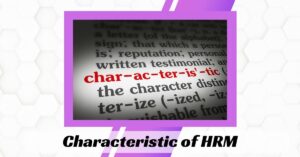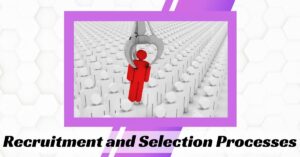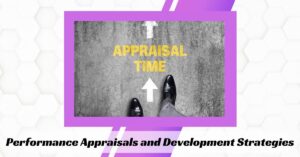Table of Contents
ToggleIntroduction
Welcome to the world of Human Resource Management (HRM). HRM plays an essential strategic role in modern organizations, providing service oriented and goal oriented personnel direction. It focuses on developing a performance driven culture to ensure that employees can maximize their potential and contribute productively to the overall success of the organization. In addition, HRM is a multidisciplinary field that covers a wide range of topics including recruiting, selection, training, development, compensation, retention and organizational change. By leveraging its expertise in these areas, HRM is able to be both flexible and adaptable while simultaneously providing valuable guidance for organizations when responding to external shifts such as shifts in workforce dynamics or regulations. Moreover, HRM also plays an important role in employee development by helping them develop the right skill sets needed for success within the organization. This includes creating an environment of continuous improvement through coaching and mentoring programs that can help employees develop crucial skills such as leadership capabilities and interpersonal communication. Additionally, characteristic of HRM assists with onboarding activities that introduce new employees to the workplace culture as well as provide resources that support employee engagement. Ultimately, Human Resource Management is a critical component when it comes to managing people in organizations efficiently. By leveraging its characteristic of HRM such as its strategic role and being service oriented, goal oriented, performance focused and multidisciplinary, HRM provides organizations with the flexibility they need to remain competitive in today’s changing business environment while also creating an environment of continuous improvement for employees by taking advantage of ongoing employee development opportunities.
Principles of Human Resource Management
 Human Resource Management (HRM) is a critical component of any organization, and understanding the principles behind it is essential for successful business operations. HRM encompasses multiple activities and processes that are designed to ensure that the right people are in the right positions, while also taking care of employees’ needs and interests. Here we will outline what some of these key principles of HRM are and how they can be applied to ensure an effective HR system.
Human Resource Management (HRM) is a critical component of any organization, and understanding the principles behind it is essential for successful business operations. HRM encompasses multiple activities and processes that are designed to ensure that the right people are in the right positions, while also taking care of employees’ needs and interests. Here we will outline what some of these key principles of HRM are and how they can be applied to ensure an effective HR system.
Staffing:
Staffing involves identifying what types of jobs exist in an organization and determining the number of personnel needed to fill those roles. It’s a process that involves assessing current and future needs, forecasting labor supply and demand, recruiting new employees, and determining whether there needs to be changes or adjustments made to the current workforce.
Recruiting:
Recruiting is all about finding the right candidates to fill open roles within your company. This entails sourcing job applicants through various methods such as job postings, search firms, social media sites, career fairs, etc. As part of this process, recruiters must assess applicants’ qualifications to make sure they have the necessary skills for each role.
Employee Relations:
Employee relations refers to how employers interact with their staff members. It’s important for companies to foster a healthy work environment by maintaining open communication channels with employees so that any issues or concerns can be addressed in a timely manner. Additionally, employee relations ensure staff members feel valued and respected within their organization.
Retention:
Retention focuses on keeping good employees onboard so that their skills can be leveraged for organizational success over time. To accomplish this goal, companies must identify factors that drive employee satisfaction.
Characteristic of HRM
 Human Resource Management (HRM) is a crucial part of any business’ success, as it helps ensure that the right employees are in the right positions. In order to ensure that HRM is an effective process, it’s important to understand the characteristic of HRM that should be present within this practice.
Human Resource Management (HRM) is a crucial part of any business’ success, as it helps ensure that the right employees are in the right positions. In order to ensure that HRM is an effective process, it’s important to understand the characteristic of HRM that should be present within this practice.
- HRM should focus on both short and long term goals and objectives. This will help ensure that changes are sustainable over time and will drive the overall growth of your business. HRM should also take into consideration how different elements of human resources interact with each other, as well as how these interactions can help optimize operations.
- HRM should be data driven. By collecting data on personnel performance and trends, you can better understand where your improvements need to be made and what you can do to create more effective strategies for increased efficiency. Furthermore, data can help uncover potential salary discrepancies or discrimination issues, which need to be addressed immediately.
- HRM needs to prioritize employee engagement initiatives in order to foster a productive workplace culture. You can incorporate employee surveys or feedback sessions to gain insight into your team’s morale and satisfaction levels and determine whether changes need to be made in your workplace environment or policies. Additionally, you may want to consider offering rewards or recognition programs on top of regular compensation packages as an additional way to keep your employees motivated and engaged.
- Practicing ethical decision making is essential when it comes to characteristic of HRM and employee relations management processes. As an employer, it’s important that you treat your employees fairly regardless of background or identity and maintain a high level of respect throughout all processes related to human resources management.
These are a few characteristic of HRM.
Recruitment and Selection Processes
 The recruitment and selection process is an essential component of any Human Resource Management (HRM) strategy. It’s the process of identifying, engaging, and hiring appropriate personnel for a company or organization. Every step of the recruitment and selection process is important in finding the right talent for a job and ensuring a long term successful hire. Let’s discuss each step in detail.
The recruitment and selection process is an essential component of any Human Resource Management (HRM) strategy. It’s the process of identifying, engaging, and hiring appropriate personnel for a company or organization. Every step of the recruitment and selection process is important in finding the right talent for a job and ensuring a long term successful hire. Let’s discuss each step in detail.
Researching Job Requirements:
When you are recruiting for a job, it’s essential to know exactly what professional skills, credentials, and experience you require from a candidate. You should also take into account any intangible qualities that make an employee an ideal fit for your organization. Once you have established these requirements, you can move on to drafting the job description and advertising it to potential candidates.
Drafting Job Descriptions:
A well written job description is essential when recruiting new staff. Your job description should accurately describe the role and responsibilities of the position while also providing applicants with an insight into what kind of experience they can expect from working at your organization— from salary details to benefits packages etcetera. When drafted correctly, this document can be one of your most powerful recruitment tools as it helps to attract motivated candidates who understand exactly what to expect from the position on offer.
Advertising Job Openings:
Once you draft a job advertisement, it’s time to post it online or in other mediums like newspapers or magazines. Choose the right portal according to your budget and targeted audience so that you get maximum response. Don’t forget to ask referral sources such as industry events, social media platforms etcetera, as these may yield further potential candidates who would otherwise be difficult to find via traditional.
Performance Appraisals and Development Strategies
 Performance appraisals and development strategies are key components of a successful HR department. Whether it’s evaluating employee performance or creating development strategies, HR departments play a critical role in an organization’s success. Performance Appraisals are one of the primary characteristic of HRM and involve evaluating an employee’s skills, abilities, and accomplishments in order to identify any strengths and weaknesses. This process helps create an individualized plan for each employee that outlines where improvement is needed, as well as areas where they can focus on professional development. In order to ensure employees take advantage of these opportunities for development, professional development programs should be implemented throughout the organization. These can include skill training, career coaching, reward systems, or even mentorship programs that provide employees with the necessary tools to help them reach their goals. Additionally, providing employees with additional support such as online courses or job related webinars can help maintain their morale as well as keep them engaged and motivated at work. Ultimately, performance appraisals and development strategies are essential tools for any HR department, as they promote professional growth while helping to improve overall productivity within the business. By taking the time to evaluate each employee’s performance and implement appropriate developmental plans that focus on their strengths and weaknesses can greatly benefit both the individual and the business itself.
Performance appraisals and development strategies are key components of a successful HR department. Whether it’s evaluating employee performance or creating development strategies, HR departments play a critical role in an organization’s success. Performance Appraisals are one of the primary characteristic of HRM and involve evaluating an employee’s skills, abilities, and accomplishments in order to identify any strengths and weaknesses. This process helps create an individualized plan for each employee that outlines where improvement is needed, as well as areas where they can focus on professional development. In order to ensure employees take advantage of these opportunities for development, professional development programs should be implemented throughout the organization. These can include skill training, career coaching, reward systems, or even mentorship programs that provide employees with the necessary tools to help them reach their goals. Additionally, providing employees with additional support such as online courses or job related webinars can help maintain their morale as well as keep them engaged and motivated at work. Ultimately, performance appraisals and development strategies are essential tools for any HR department, as they promote professional growth while helping to improve overall productivity within the business. By taking the time to evaluate each employee’s performance and implement appropriate developmental plans that focus on their strengths and weaknesses can greatly benefit both the individual and the business itself.
Benefits
The effective management of an organization’s employees and their compensation, benefits, and incentives can have a profound effect on the success of the business. As such, it is important to create a compensation, benefits, and incentives package that is competitive and rewarding for your staff. When it comes to compensation and salary, it is essential to consider both the competitive market as well as internal equity between team members. A competitive wage/salary should be offered that is reflective of the skill set required for each individual role. Additionally, performance bonuses can be beneficial in rewarding employee efforts beyond normal wages. Performance evaluations should also be conducted regularly to ensure ongoing success and productivity at all levels. Further, vacation/leave policies should be clearly stated in order to keep work hours consistent throughout teams and departments. This will ensure that employees are well rested and productive during their work hours, leading to a healthier work environment overall. Health care benefits should also be given serious consideration when creating a comprehensive benefits package; not only does this show concern for the health of your employees but can also lead to higher job satisfaction ratings. Finally, pension plans are important in providing stability for older employees who may not have access to other forms of income after they retire from your company. Finally, employee incentives can also play a role in keeping morale high amongst workers. These don’t necessarily need to come in the form of monetary rewards; simple recognition for hard work or having lunch with the CEO may go just as far! Overall, having successful compensation, benefits, and incentives programs will reflect positively on your business by ensuring employee satisfaction and productivity within your organization.
Conclusion
As we come to the conclusion of our discussion on the characteristic of HRM, it’s important to understand the implications for HR professionals and organizations as a whole. Developing effective HR strategies and connecting them to organizational goals are essential for company success. It’s crucial for companies to take into account how these strategies can both benefit employees and contribute in a positive way. At the same time, it’s important for companies to be aware of the challenges posed by a constantly changing landscape. Companies need to stay ahead of the trends in order to remain competitive, and HR professionals must be ready to adapt their strategies as needed. By staying updated with industry developments and using data driven decision making, organizations can achieve better results while also creating a positive working environment for employees. Overall, the characteristic of HRM play an important role in organizational success. Understanding that these characteristic of HRM are constantly evolving is paramount in developing effective strategies and improving processes within an organization. With this in mind, it’s recommended that companies regularly assess their current HR practices and make any necessary changes/updates as needed. By doing this, companies can ensure they’re set up for success while providing their employees with a satisfying work experience.
Frequently Asked Questions
What are the features of Human Resource Management?
- Recruitment & Selection
- Performance Appraisals
- Training & Development
- Compensation & Benefits
- Health & Safety Management
What are the HRM questions and answers?
List of questions and answers on Human Resource Management!
Q.1. Why study human resource management?
Studying Human Resource Management (HRM) provides students the opportunity to understand, analyze and develop strategies and practices for management of human resources within organizations. Let’s move forward to next question of the blog characteristic of HRM-
Q.2. Define human resource management.
Human Resource Management (HRM) is the strategic and reliable approach to managing an organization’s most valuable asset – its people. It ensures that employees are managed in accordance with an organization’s objectives and goals, while also caring for their wellbeing and overall satisfaction. Let’s move forward to next question of the blog characteristic of HRM-
Q.3. What is human resource development?
Investment banking and financial modeling
Human Resource Development (HRD) is a process that focuses on developing and improving the skills, abilities, and knowledge of personnel within an organization.
Q.4. Explain the need for human resource development?
The need for HRD is determined by a number of factors such as organizational objectives and structure, type of business or industry sector, employee skill levels and competencies among others.
Let’s move forward to next question of the blog characteristic of HRM-
What is the importance of HRM?
Human Resource Management (HRM) is an important function of any business because it ensures that the organization has the right people, in the right positions, at the right time. HRM involves recruiting and selecting employees, training them, providing guidance and direction on performance expectations and standards, monitoring employee performance and providing feedback, compensating or rewarding employees through various compensation programs. It also provides a means to ensure compliance with rules, regulations and laws related to employment as well as creating policies regarding workplace practices like harassment prevention or overtime pay. Additionally HRM can provide valuable insights into employee morale by gauging opinion surveys about job satisfaction or other topics relevant to work environment. By implementing effective Human Resource Management strategies employers are better able to achieve their organizational objectives while ensuring a safe working environment for their employees.
Is Human Resource Management a line management’s responsibility?
Yes, human resource management is a line manager’s responsibility. Line managers are ultimately responsible for their organization’s staffing and personnel decisions, as well as the implementation of HR strategies to ensure that the right people with the right skills are in place to meet current and future business needs.
Investment banking and financial modeling
What are the objectives of career planning?
The main objectives of career planning are as follows:
1. Developing Self-Awareness
2. Identifying Career Goals
3. Creating Action Plans:
4 Improving Employee Engagement & Retention Through HRM Practices













